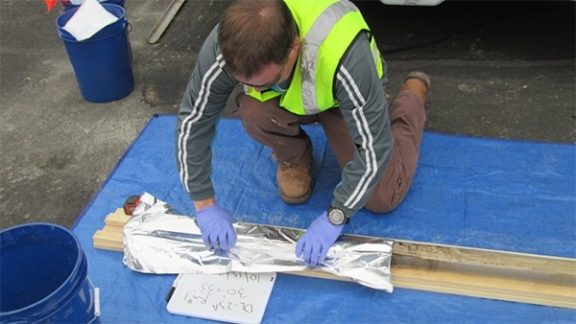In the article “Estimating groundwater heat exchange in a standing-column well by injection of a bromide tracer,” published in the journal Geothermics, Haley & Aldrich hydrogeologist John Kastrinos and his co-authors shared research results with implications for the design of efficient ground-source heat exchange (GSHE) systems.
GSHE systems — more commonly known as geothermal heating and cooling systems — rely on boreholes dug hundreds, sometimes thousands, of feet deep. Those boreholes house pipes that circulate fluids between a building and the ground, exchanging heat to regulate the building’s temperature.
In the article, Kastrinos and his coauthors — Andrew Chiasson of the University of Dayton and Paul Ormond of the Massachusetts Department of Energy Resources — detailed the results of research into groundwater exchange during the operation of a standing-column well heat exchanger. Understanding this metric helps evaluate the effect of groundwater flow on thermal exchange.
The authors note that it is “commonly misconceived” that borehole lengths can be reduced if “large volumes of groundwater are encountered during drilling” because it’s assumed that “advective flows of groundwater are also high,” which (the assumption goes) makes heat transfer between groundwater and the borehole more efficient. The authors tested this premise by injecting a bromide tracer and monitoring its concentration and temperature over time, and they ultimately concluded that “groundwater inflow during drilling is a poor indicator of advective flow in the vicinity of a standing-column well.”
Read the article for detailed methodology and results.



